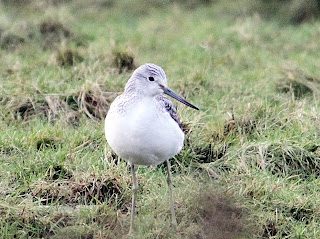It was a totally fascinating morning’s ringing and birding at Rawcliffe Moss this morning which began when I loaded the poles on the car at 0530 to find both the bamboos and the car roof covered in a thin layer of frost that initially numbed my fingers, again. Thank goodness for the dependable vacuum flask.
320 feet of net later Will and I waited for the catch, part of which we hoped would be a few of the breeding Willow Warblers, because the singing males at least are back on their territories. We caught 6 new birds, a Lesser Redpoll, one of the few caught at the site, 2 Chaffinch, 2 Goldfinch and a Reed Bunting. Retraps came in at 1Reed Bunting and 4 Willow Warblers.




The four Willow Warblers were all males, each of them originally ringed in the same plantation in the breeding season of 2008. Three of them were subsequently retrapped in 2009, the fourth not. The latter omission may be explained simply by the smaller numbers of ringing sessions on site during the awful summer of 2009. We also caught a ringed Goldfinch but not a ring we recognised – another control to follow the one from earlier in the year. Goldfinch X818575 anyone?
The visible migration was interesting, varied but thin with a couple of Swallows only, 8 Redpoll, 1 Siskin, 6 alba and 4 Whimbrel with the star bird a single Fieldfare that chuckled north about 9am.

Other birds seen: 2 Buzzards, Sparrowhawk, 10 Goldfinch, 15 Curlew, 6 Linnets and 4 Corn Bunting with several of each resident Lapwing and Skylark.























































.jpg)












